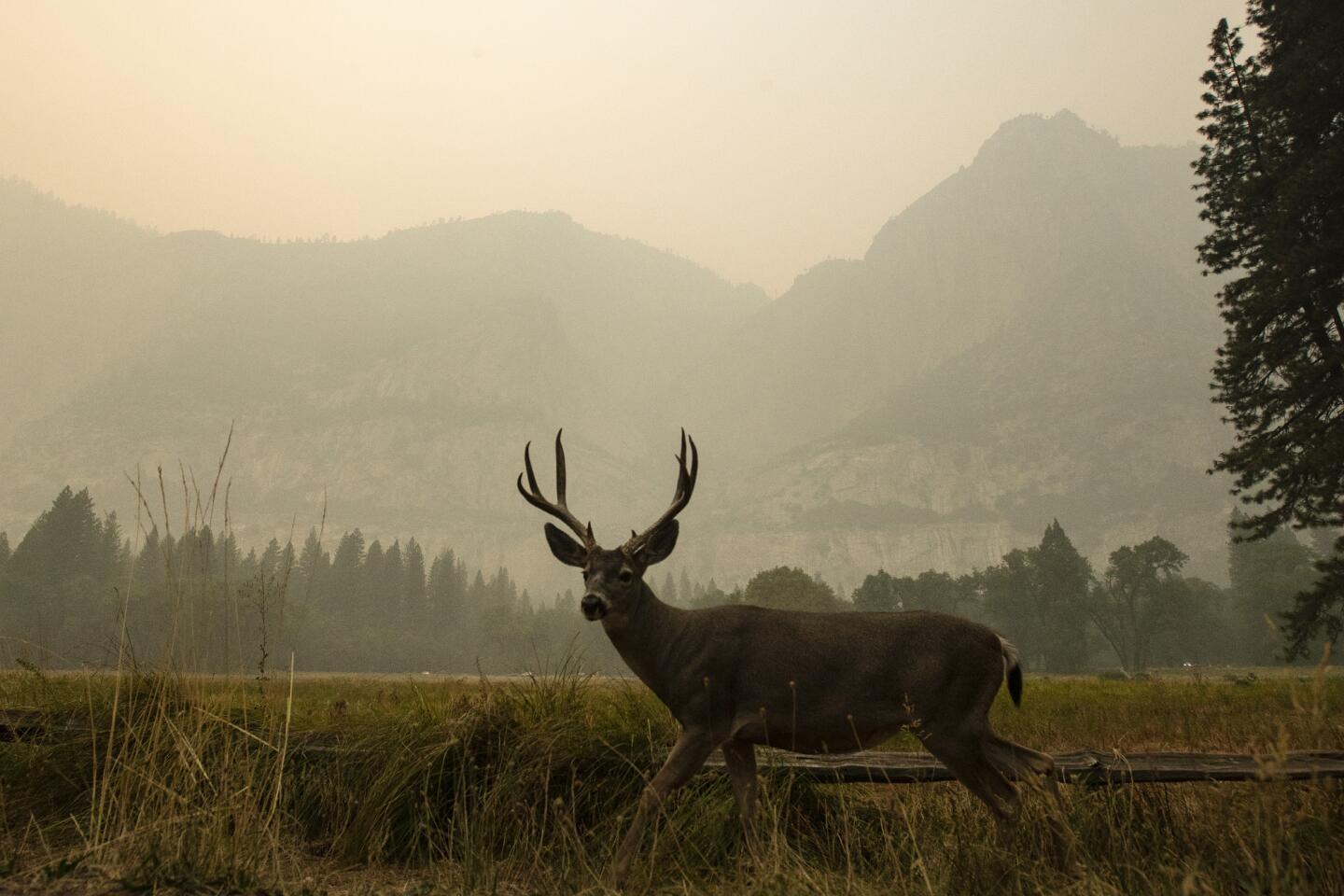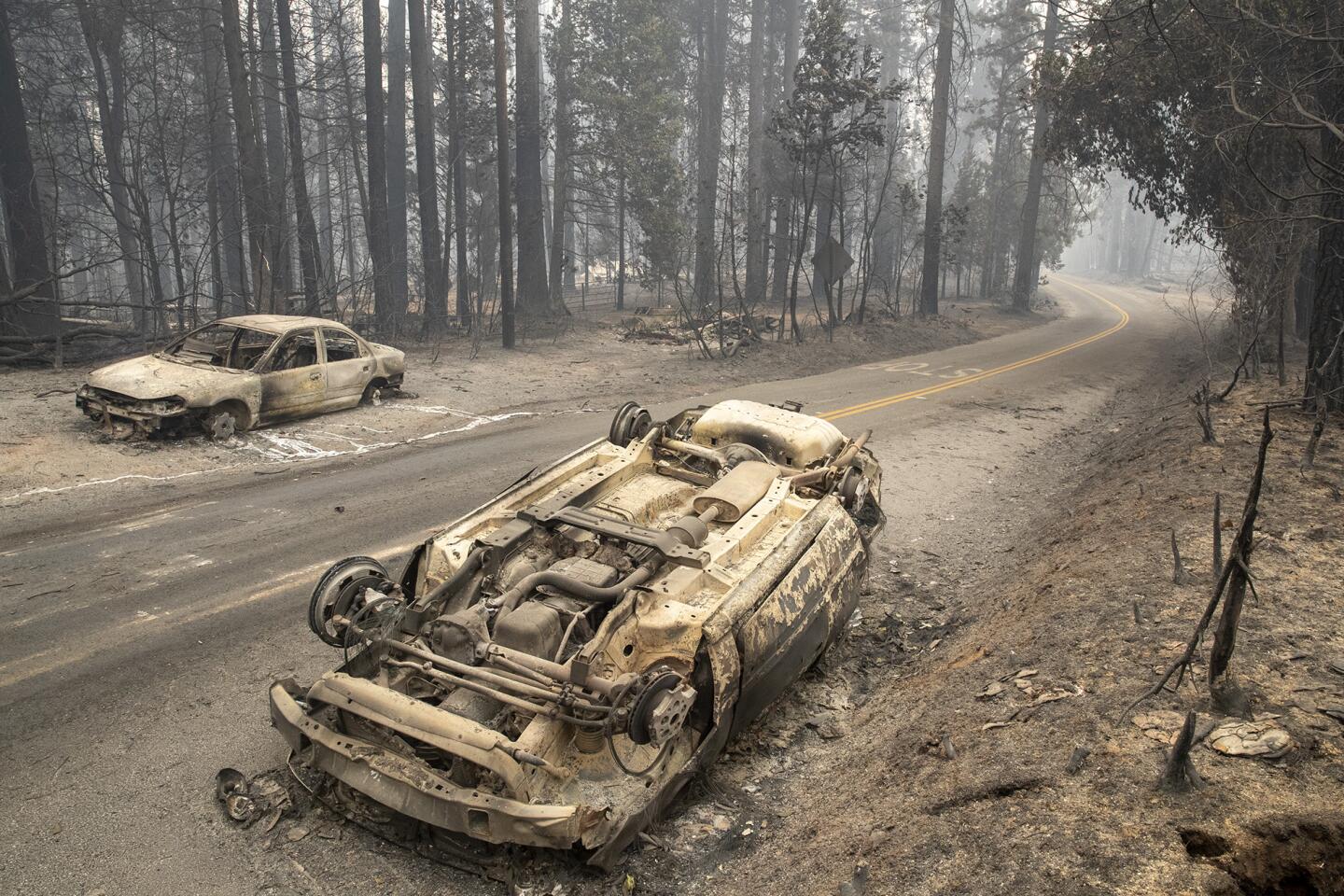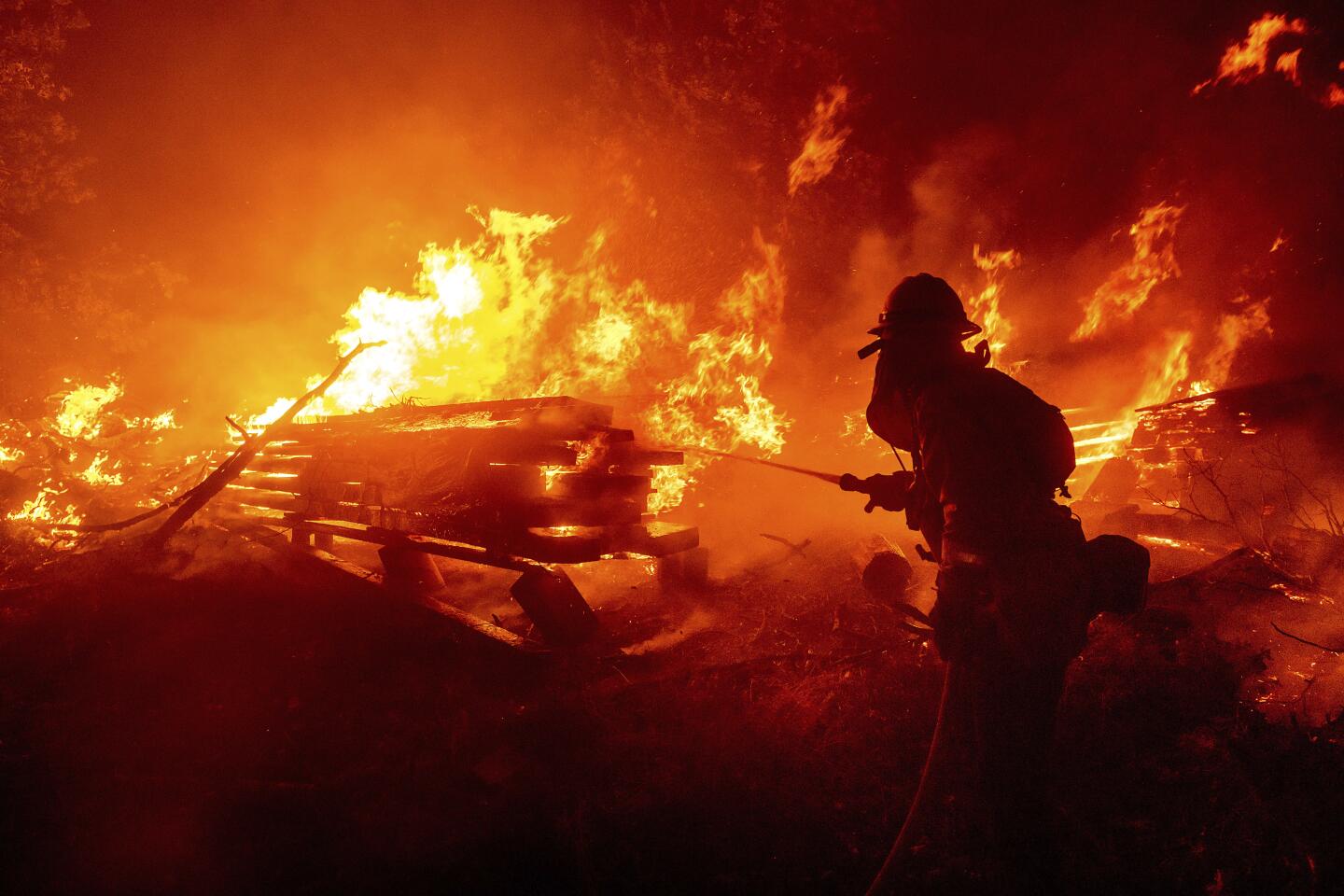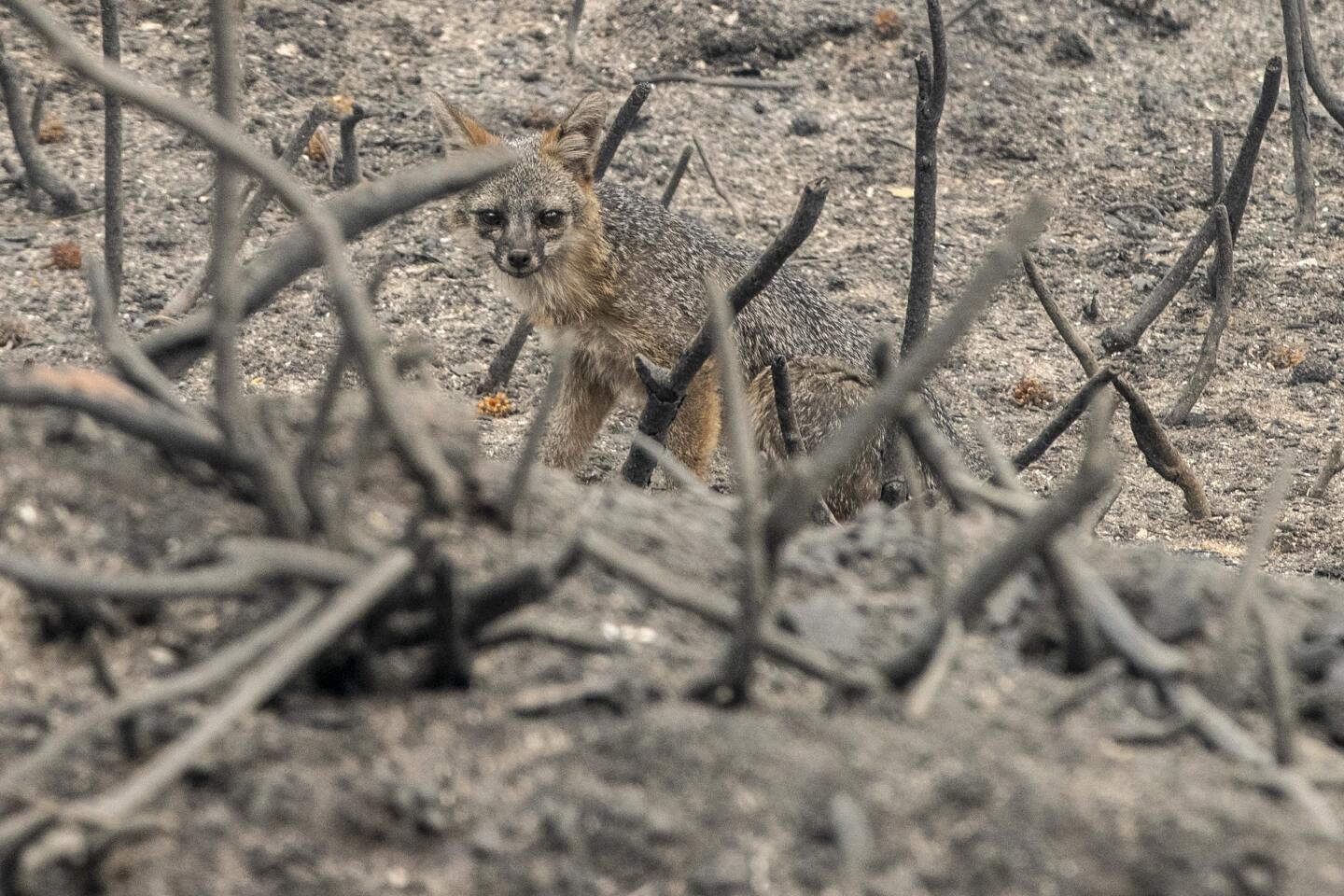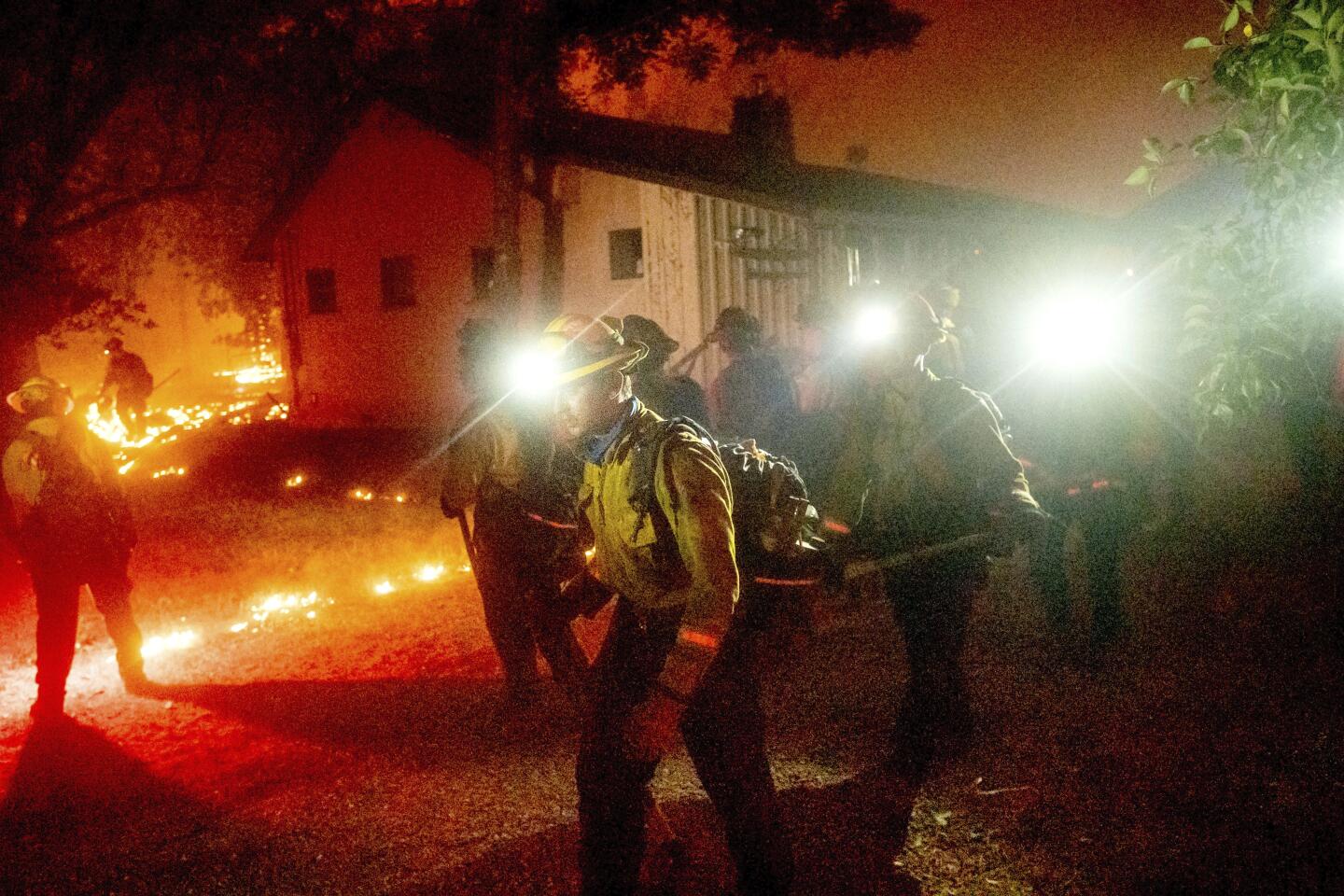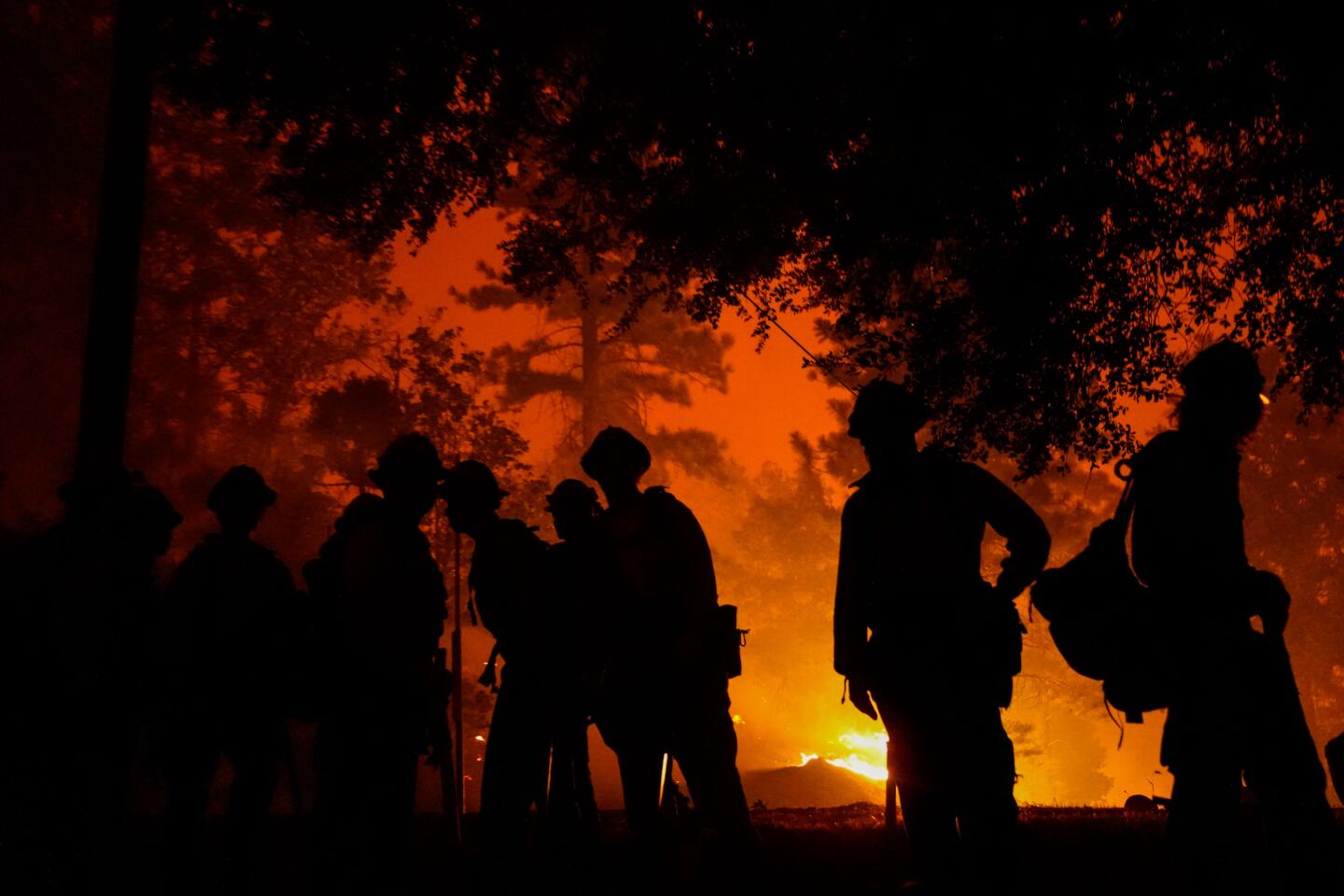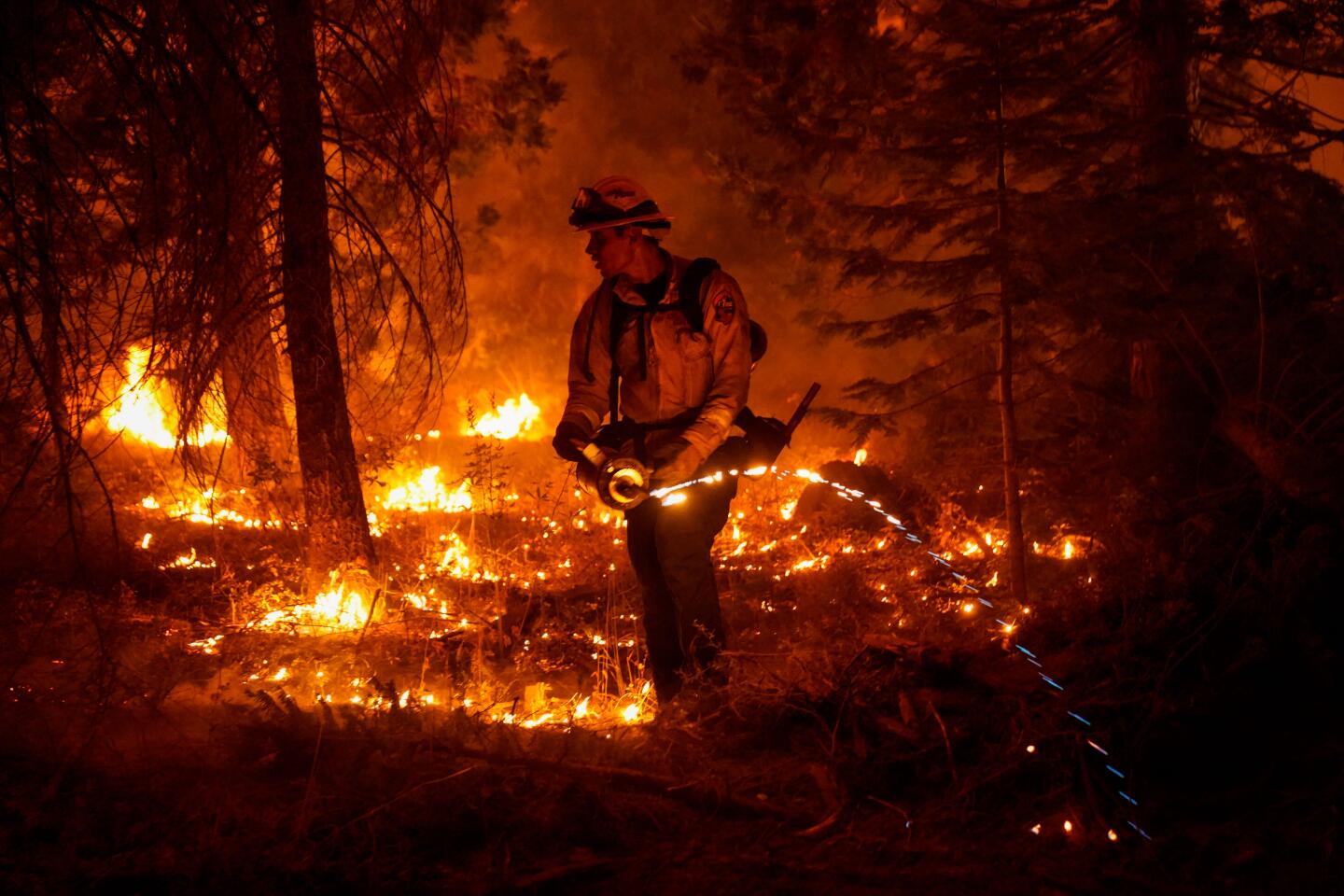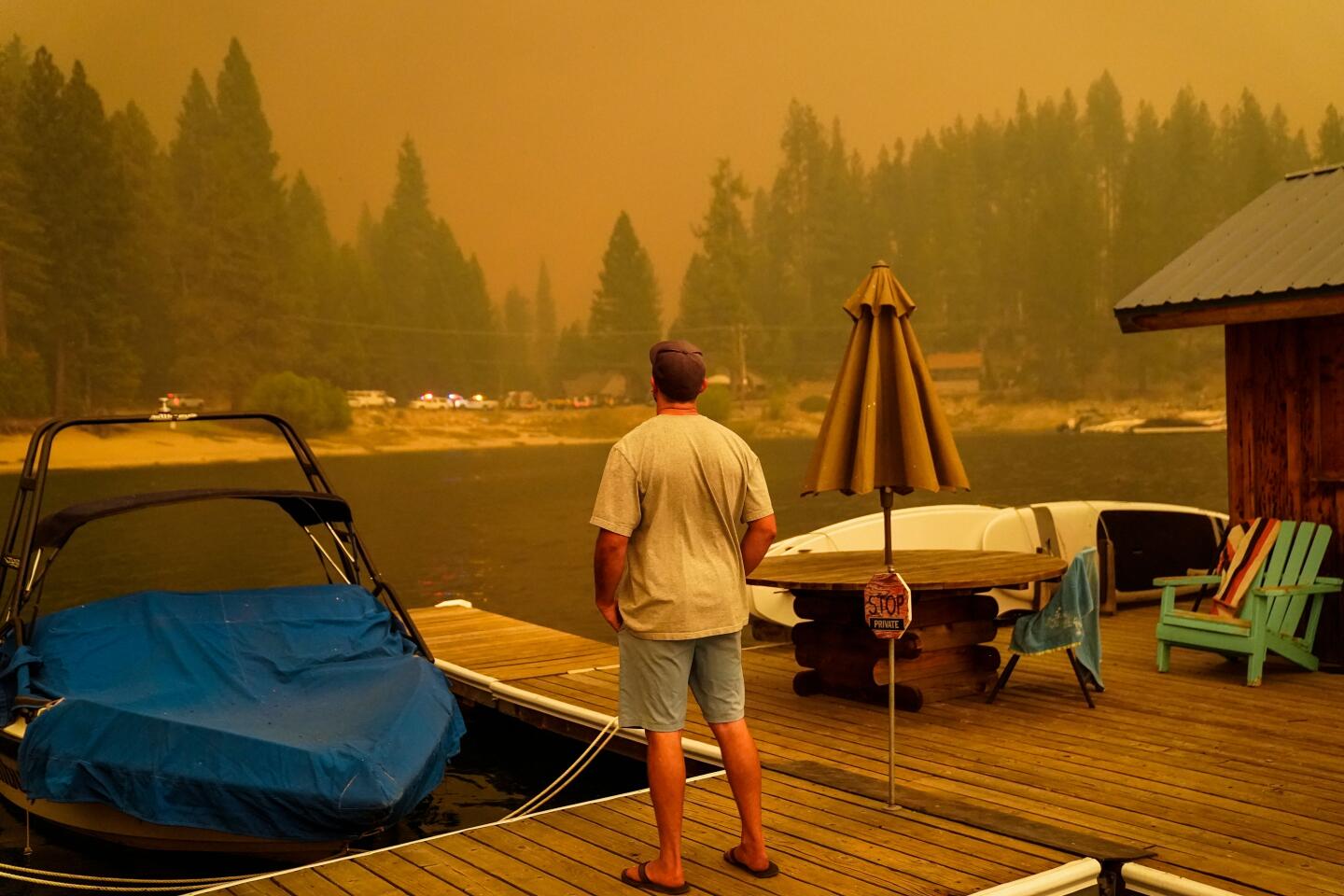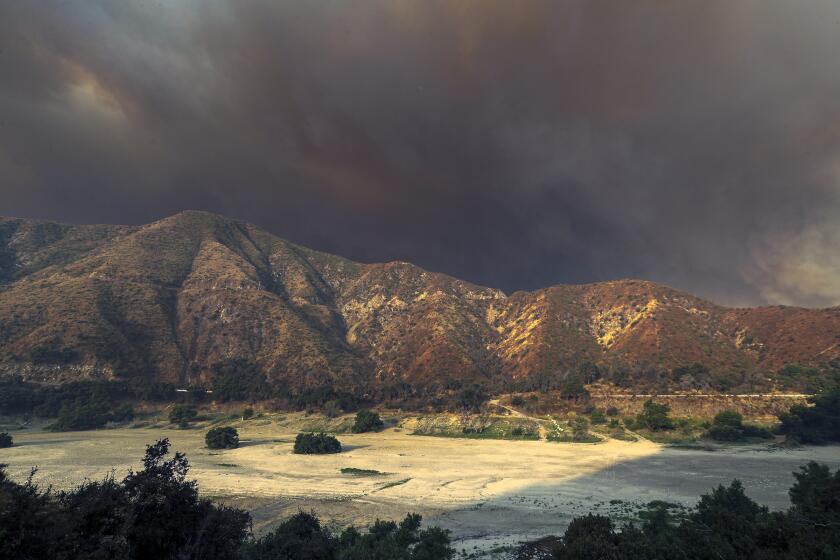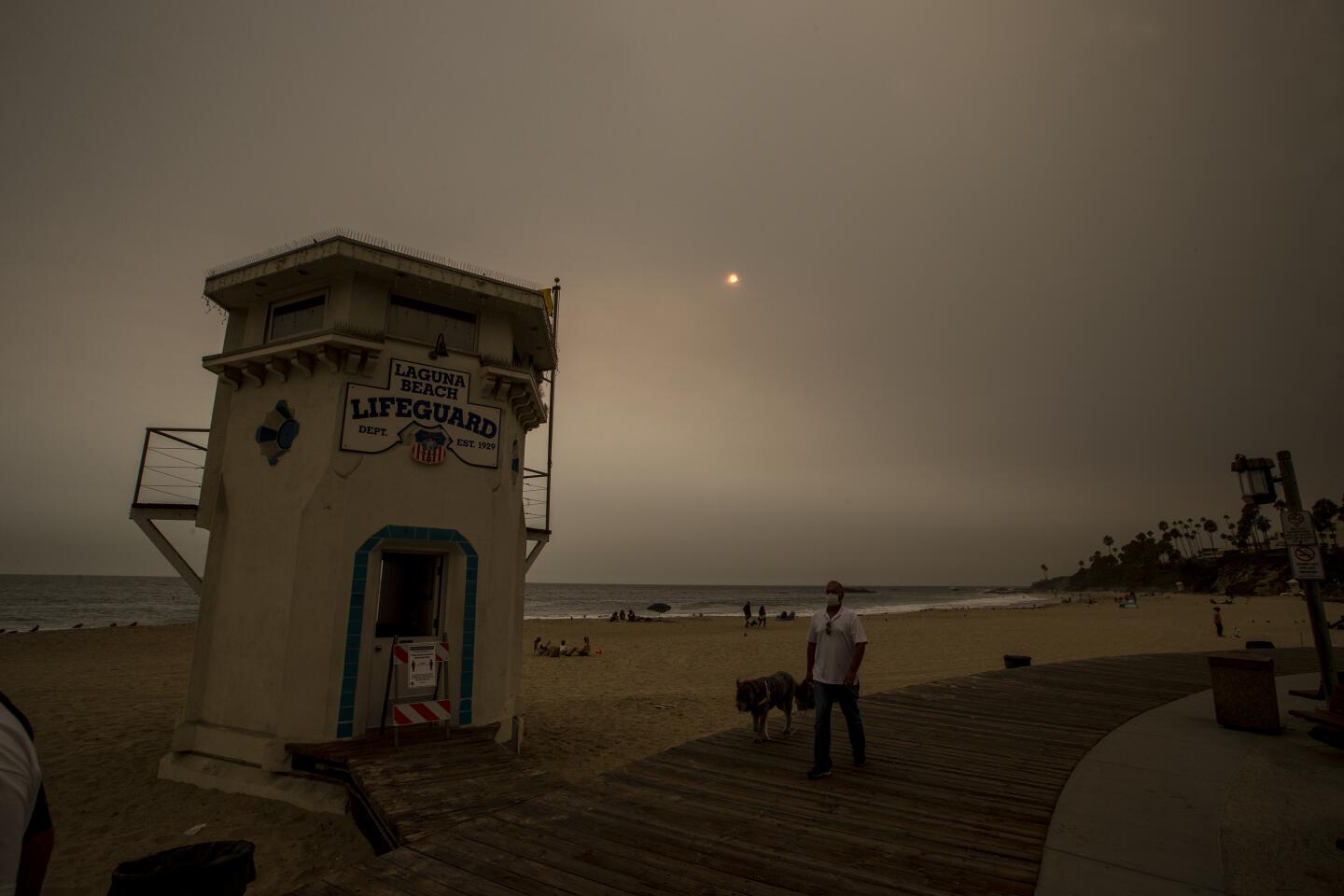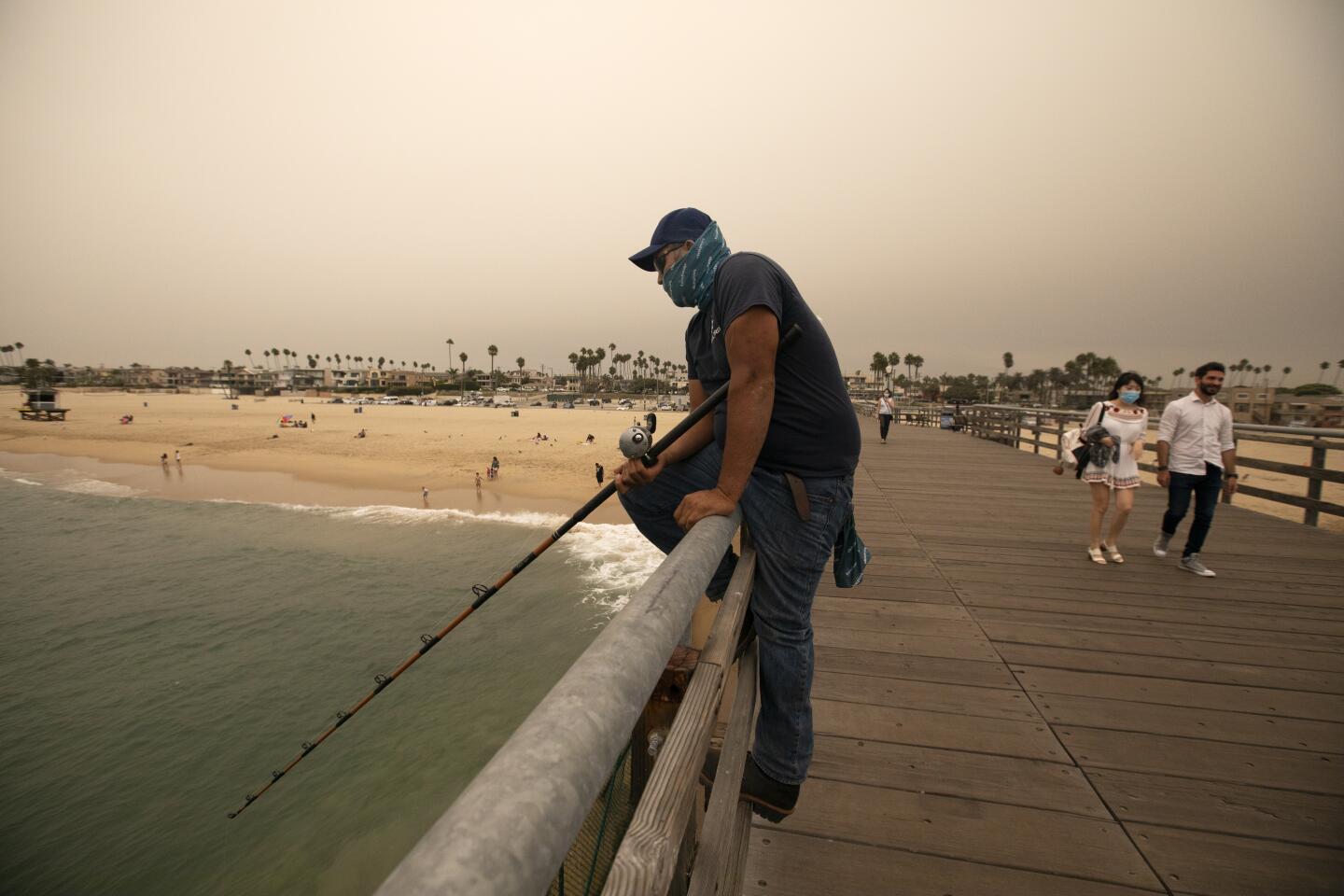Death toll rises as California wildfires continue destructive path
- Share via
Wildfires of historic magnitude have led to daring escapes and wrenching devastation.
- Share via
OROVILLE, Calif. — The death toll from a massive fire that swept through the mountain communities of Butte, Plumas and Yuba counties has risen to 10, and 16 people remain missing, fire officials said Thursday evening.
The North Complex fire mushroomed in size this week, scorching a total of more than 252,000 acres and forcing some 20,000 residents in Plumas, Butte and Yuba counties from their homes. Officials said the bodies of seven more people were found Thursday as they searched through hamlets where the fire burned.
A hand crew was overrun by flames in the fire’s West Zone in Butte County, which had become extremely unpredictable due to erratic weather changes. The crew was able to escape, but two firefighters suffered minor injuries.
The North Complex was one of the fires that exploded in size this week as record-high temperatures and strong winds beset the state. Flames raced through the northern Sierra Nevada foothills before dawn Wednesday — catching crews and residents off-guard as they leaped southwest toward towns in Butte County, including the community of Paradise, which was largely destroyed by the 2018 Camp fire.
Steve Kaufmann, a spokesman for the fire’s response team, said 2,000 structures have been destroyed or damaged, though that number may increase after crews further assess the area Friday.
So much smoke enveloped the region that it shaded the fire from the sun, reducing temperatures and increasing the humidity Thursday, according to an incident meteorologist. Though the smoke impedes firefighters’ aircraft response, it has helped with the firefight slightly. As of Thursday evening, the North Complex fire is 23% contained.
The incident is now the 10th-largest wildfire in state history, according to the California Department of Forestry and Fire Protection. Wildfires have burned more than 3.1 million acres statewide this year — the largest amount on record. At least 19 people have died and thousands of structures have been destroyed.
Cal Fire spokesman Daniel Berlant said dangerously dry conditions led “to explosive fires that have really just skyrocketed us past the 3-million mark for the first time in our recorded history.”
“Unfortunately, with several more months of fire season to go, this number could continue to increase,” he said Thursday.
Less than two years after the deadliest and most destructive fire in California history tore through Butte County, the region is again under siege from a fire complex that has burned more than 250,000 acres.
The Dolan fire, which ignited Aug. 18 north of Limekiln State Park in Monterey County, has also seen extreme growth this week. Officials said the combination of high temperatures, dry fuels and wind combined to more than triple the size of the fire, to more than 111,000 acres.
The fire also has spread to the Army’s Ft. Hunter Liggett, though that property has not been forced to evacuate, officials said.
Near the Oregon border, the Slater fire has grown to 120,000 acres since it ignited Monday in the Klamath National Forest. The fire is threatening the communities of O’Brien, Takilma, Cave Junction and Gasquet, and destroyed 150 structures in Happy Camp.
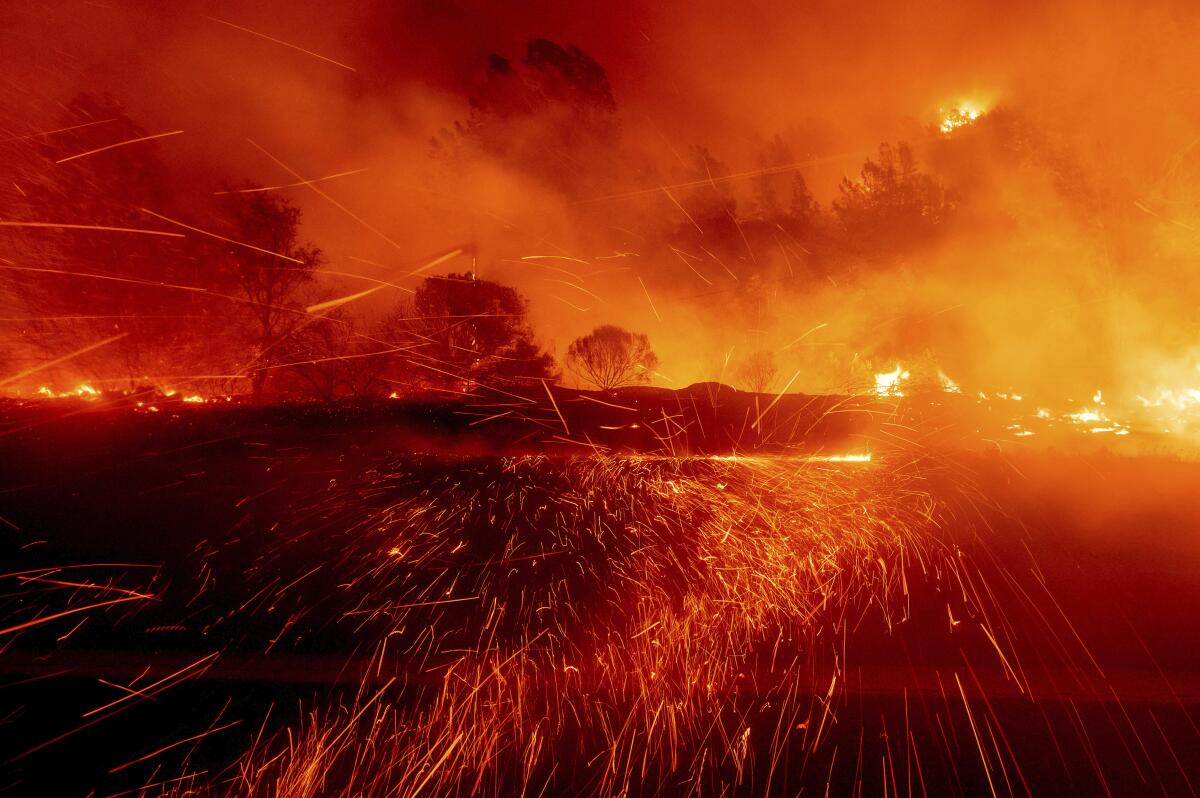
While the mid-August lightning siege set California on the path toward a historic and horrifyingly active fire season, a second salvo of summer infernos has since pushed the toll to more devastating heights.
The unprecedented firestorm prompted the U.S. Forest Service on Wednesday to temporarily close all national forests in California.
Many officials, including Gov. Gavin Newsom, have said the effects of climate change have helped set the stage for this year’s prolific fire season.
“I quite literally have no patience for climate change deniers,” he said Tuesday.
“You may not believe it intellectually,” he added. “But your own eyes, your own experiences, tell a different story.”
California expands its forest closures because of extreme fire risk.
So far this year, almost 7,700 fires have ignited statewide, according to Berlant.
“This year has already been a very destructive fire season, and it is nowhere close to being over,” he said Wednesday.
Six of the state’s 20 largest wildfires have started in the past month or so, according to Cal Fire. That includes the August Complex, which has burned an all-time record 471,185 acres in a remote area in and around Tehama County.
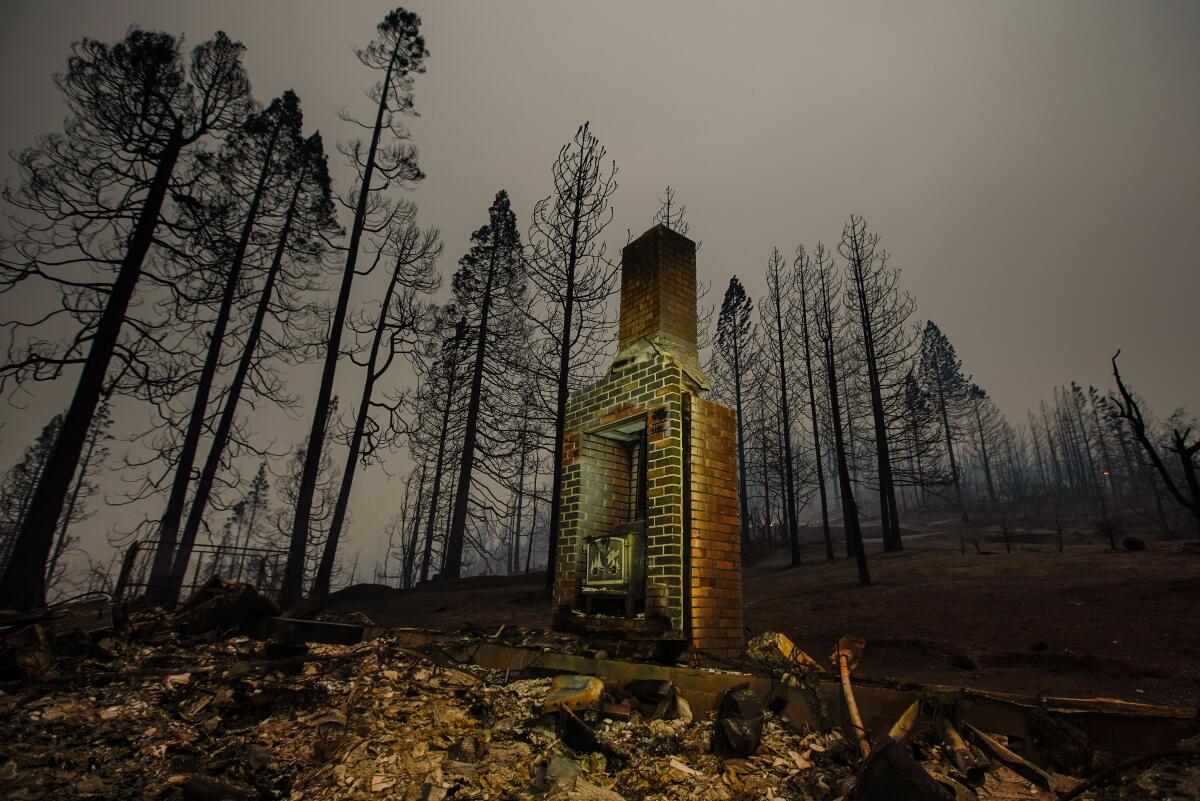
That complex — which started Aug. 17 as a cluster of 37 distinct fires in the Mendocino National Forest — was 24% contained as of Thursday. The most recent acreage figure pushed it well past the 2018 Mendocino Complex fire, which burned more than 459,000 acres.
The August Complex is burning in a remote area in and around Tehama County. It’s the largest fire by size but far less destructive than the 2018 Camp fire.
Crews have almost completely hemmed in the SCU Lightning and LNU Lightning complexes, which rank as the third- and fourth-largest wildfires in state history, at 396,624 and 363,220 acres, respectively.
The SCU complex — which began as a collection of about 20 blazes in Contra Costa, Alameda, Santa Clara, Stanislaus and San Joaquin counties — is now 98% contained. Containment is at 95% for the LNU complex, which has charred parts of Napa, Sonoma, Lake, Solano, Yolo and Colusa counties.
Joining those complexes on the distressing leaderboard is the Elkhorn fire, which is burning in the Mendocino, Shasta-Trinity and Six Rivers national forests. It has scorched 255,309 acres — the ninth-largest burn zone — and was 27% contained as of Thursday.

The massive Creek fire, which has chewed through more than 175,000 acres, destroyed an estimated 360 structures and prompted widespread evacuations in the Sierra foothills northeast of Fresno, is currently the 17th-largest in state history.
The fire caused an explosion in China Peak Mountain Resort, igniting a bunker of explosives that were used for avalanche mitigation, Fresno sheriff’s officials said. There was some damage to the resort, but no one was injured.
As is the case for the North Complex fire, the layer of smoke over the Creek fire has helped improve weather conditions. Milder winds and temperatures allowed firefighters to make progress for the first time, increasing the fire’s containment to 6%.
“We’re really trying to start gaining containment on this fire,” said Chris Vestal, a spokesman for the Creek fire response. “A lot of what we want to do is make sure everything that is standing stays standing.”
Despite the fire’s growth, evacuation warnings were lifted for Arcadia residents, while six other areas are still being advised to be ready to leave.
Firefighters also made progress with the fast-growing Bobcat fire, which doubled in size in one day to nearly 24,000 acres. The fire burning in the San Gabriel Mountains is now 6% contained, according to an incident report. The fire’s growth was largely in the northeast direction Thursday, sparing foothill residential communities.

Six areas remain under an evacuation warning: Duarte, Bradbury, Monrovia, Sierra Madre, Pasadena and Altadena.
Near Yucaipa, the El Dorado fire had burned almost 14,000 acres and was 31% contained as of Thursday morning. Though there’s no current threat to communities in Big Bear Valley, Cal Fire officials issued an advisory asking visitors to postpone visits to the area in case evacuations are ordered.
In San Diego County near the Mexican border, the Valley fire grew to 17,665 acres and was 35% contained, according to Cal Fire. Officials were reporting 15% containment for the 1,300-acre Willow fire, which sparked north of Smartsville in Yuba County on Wednesday. That fire has destroyed 30 structures, according to Cal Fire, while 700 others are considered threatened.
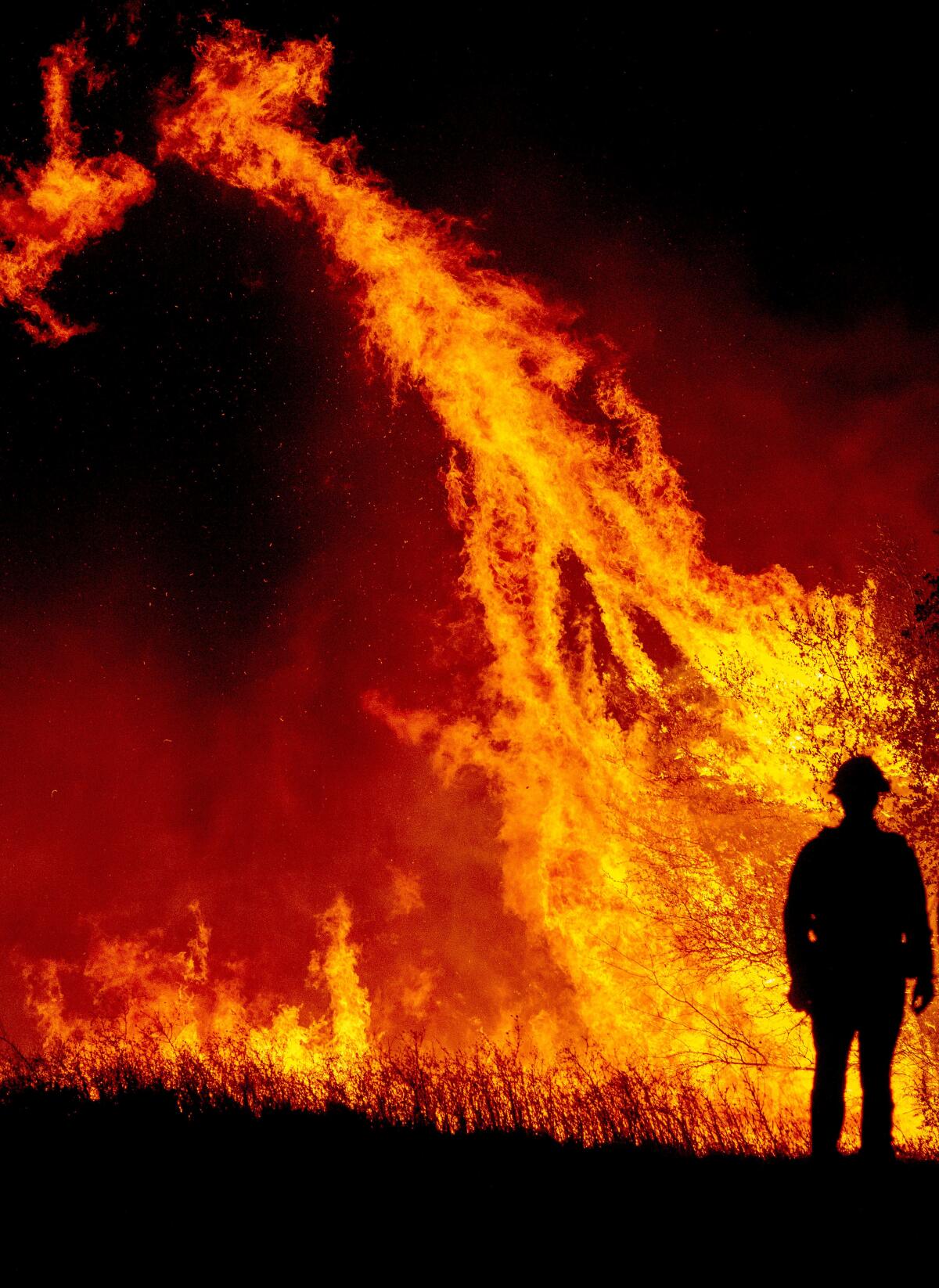
The hope is that weather conditions will “improve across the state today, with most areas experiencing seasonal temperatures and dry conditions,” according to Cal Fire.
“Northern California should expect average temperatures through the weekend, with a possible cooling trend next week,” officials wrote in a statewide situation update Thursday. “In Southern California, temperatures will be at or slightly above normal.”
That would be a boon to firefighters, who have had to contend with a pair of scorching heat waves in the past few weeks. UCLA climate scientist Daniel Swain said that last month was “the warmest August on record in California.”
With fires raging throughout the West Coast, the skies over California have taken an apocalyptic turn — choking the air with ash and smoke in some regions, while snuffing out sunlight in others. Rarely have so many Californians breathed such unhealthy air.
Southern California is being engulfed by smoke and unhealthful air from fires up and down the West Coast.
The South Coast Air Quality Management District is warning that smoke and ash are likely to hit much of Los Angeles, Orange, Riverside and San Bernardino counties Thursday due to the two major fires locally and smoke flowing in from Northern California blazes.
The air district’s smoke advisory said that most of the Southern California region will be affected by smoke, with the highest readings of fine-particle pollution, tiny lung-damaging particles known as PM2.5, in areas closest to the Bobcat and El Dorado fires.
Smoke blowing in from Northern California “may also contribute to widespread elevated PM2.5 concentrations,” the air district said, but due to shifting winds, the smoke impacts “will be highly variable in both space and time.”
The air district said to expect “noticeable smoke and ash impacts” in southwest Los Angeles County, Orange County and southwest Riverside County.
The bad air is being generated by fires raging in California, Oregon and Washington that are lofting smoke into the air in a massive plume that is blanketing the entire West Coast and extends far out into the Pacific.
But in Southern California much of that smoke has remained aloft. At the ground level, air quality remained in the “good” to “moderate” range Thursday morning across most of the region, except for areas near the Bobcat fire in the Angeles National Forest north of Azusa and Glendora, and the El Dorado fire in the San Bernardino Mountains near Yucaipa, where readings showed air quality in the “unhealthy” range.
Air quality has been significantly worse in Northern California, where raging fires this week have choked the air with smoke and ash and snuffed out the sunlight, casting a gloomy, orange pall over San Francisco and other areas. Air monitoring data Thursday morning showed unhealthy pollution levels in most of San Francisco and in other parts of the Bay Area.
Times staff writers Anita Chabria, Matthew Ormseth and Joe Mozingo contributed to this report.
More to Read
Sign up for Essential California
The most important California stories and recommendations in your inbox every morning.
You may occasionally receive promotional content from the Los Angeles Times.




